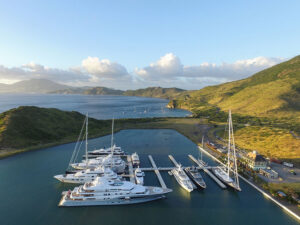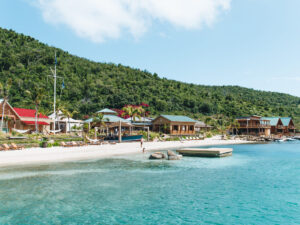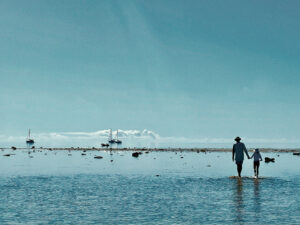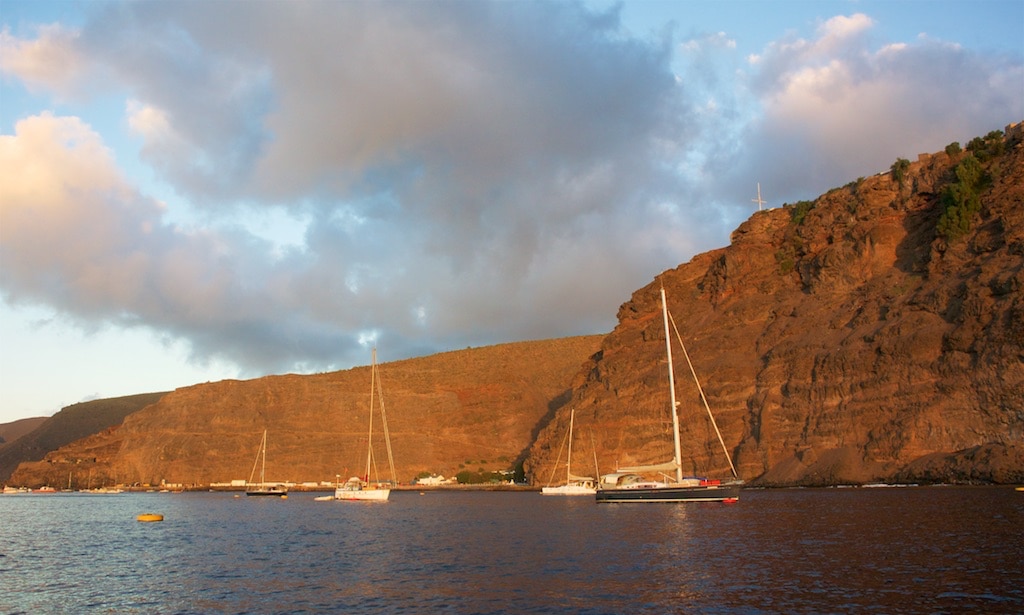
2 016 was the year St. Helena was supposed to change. But it didn’t, and I’m glad.
The changes were to come with the opening of an airport that would bring tourists, money and jobs. But things didn’t quite go as planned.
The island of St. Helena consists of an isolated mountain peak 8 miles long and 5 miles wide. It juts up from the South Atlantic, roughly 1,000 miles west of Namibia and 2,000 miles east of Brazil, and the terrain is all up and down. An airport had never been built because there is no naturally level space long enough for a runway and creating one would be expensive. Eventually, the British government, of which St. Helena is a dependency, came up with the more than $300 million cost, and a runway and airport were completed in 2015. However, inexplicably and incredibly, it was built in the wrong place: on the edge of cliffs on the southeast corner of the island, exposed to almost constant trade winds. Any sailor, pilot or meteorologist would know that when those trade winds hit the cliffs, they’d be deflected upward and increase in speed. A meteorological report presented before construction began said as much, but the runway was built on the edge of the cliffs anyway. There is so much turbulence, planes cannot safely land and take off, and none do. I read that politicians say the “problem” will be fixed. How they plan to fix trade winds and cliffs I do not know.
So St. Helena remains a place where, when any of the 4,000 residents see an unfamiliar face, they know you have arrived by sea — probably on your own boat — and they are charming and friendly. Honest too. Most sailors arrive from South Africa, where crime can be a problem. On St. Helena, this isn’t the case. On a recent visit, a man ran after me to return a five-pound bill that had fallen unnoticed from my pocket.
.
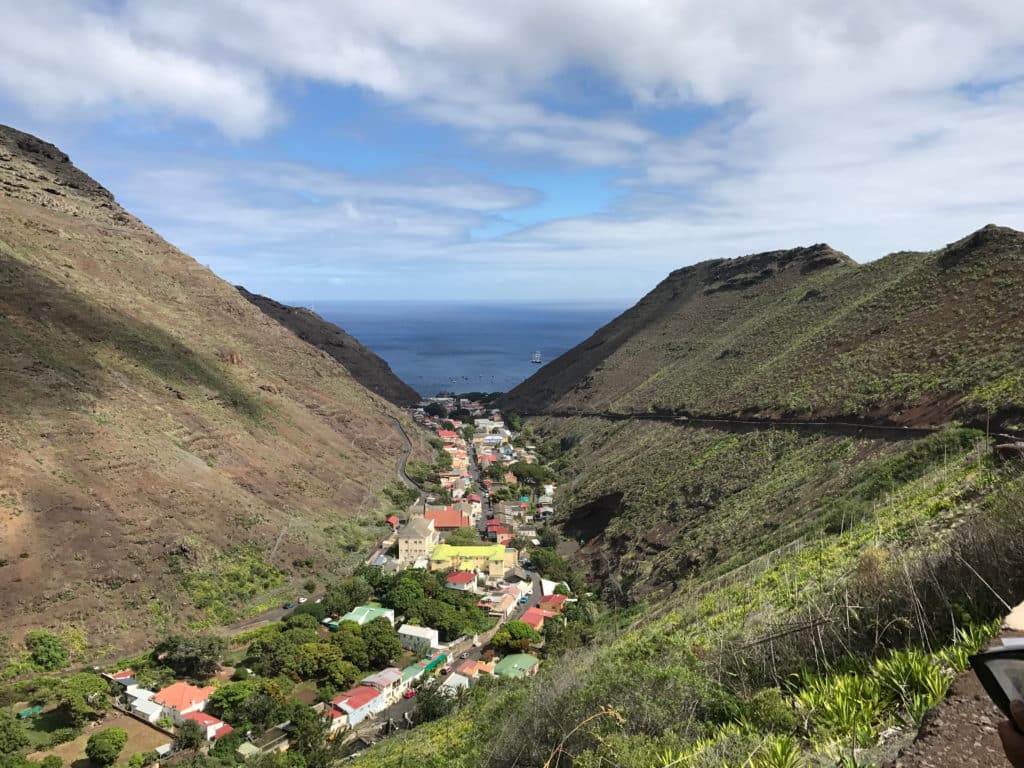
Getting Ashore
There is no harbor at St. Helena, just a slight indentation on the north side of the island off a deep ravine. This is where Jamestown, the island’s only town, is located. Since I visited almost 30 years ago, there have been some welcome changes — most notably in the form of 23 moorings and a launch service.
In 1988, I had to anchor in 80 feet of water and go ashore by dinghy, which was a greater adventure than I wanted. The landing consisted of a concrete slab with an inverted U of metal pipe along the edge. Six hawsers hung down from the pipe. Approaching the landing, I watched the swell. On the upward surge, my companion, Jill, grabbed one of the hawsers and hung on for dear life, trying to pull the dinghy onto the concrete before the water retreated. The pipes and hawsers are still there, but the acrobatics of catching them and stepping ashore can be avoided by utilizing the island’s new ferry/launch. The ferry can be called on VHF Channel 16 and runs from 0400 for local fishermen, usually making a trip to the mooring field every hour on the hour. A ride costs about $2 per person, and is well worth it.
The moorings are on the west side of what is nominally called James Bay. They consist of flat, circular floats, about a yard in diameter, with an eye in the middle. They do not have pennants and are too heavy to lift, which sometimes makes them difficult to tie onto from boats with high freeboard. On Gannet, my Moore 24, I was able to lean over from the tiller and run a line through the eye.
Clearing in and out is required with three sets of officials, all of whom I found to be relaxed and friendly. The port captain and customs are in a building on the waterfront, and immigration is a short distance away in the police station. The police station can be found by walking up the only street leading inland from the waterfront. It’s on the right, just after you pass under an arch. Across the street, at the back of a small park, is Anne’s Place, the primary yachtie hangout with good food and Internet, neither of which are free. Aside from the lack of crime, St. Helena differs from South Africa in a second way: I found goods and services in St. Helena to be far more expensive than in South Africa. Rather slow Internet in St. Helena cost me the equivalent of $8 per half-hour. A box of wine that cost $7 in South Africa cost $26 in St. Helena.
The two currencies used — the St. Helena pound and the British pound — are of equal value, and the St. Helena pounds can be spent only on St. Helena and Ascension islands. There is one bank, and there are no ATMs. I was told I could get a cash advance on a credit card, but I arrived with an ample supply of cash and only had to exchange money.
The four small grocery stores on the island were better stocked than I remembered from 1988, but because of the high prices, St. Helena is not a place I would choose to provision. Water, which is available at the ferry-boat landing, must be carried out in jerrycans, which is what I normally do anyway.
If you go to St. Helena, I highly recommend taking a tour of the island. Mine cost $20 per person in a shared taxi. You will see the house where Napoleon died, spectacular views and perhaps even the runway to nowhere.
St. Helena was one of my favorite stops of this circumnavigation, and I enjoyed it even more than in 1988. I don’t know that there is any rush, but you might want to go before they fix the cliffs and trade winds
– – –
Writer and sailor Webb Chiles is in the process of completing his sixth circumnavigation aboard his Moore 24, Gannet. At press time, he was installing two new solar panels in Marathon, Florida. You can track his progress around the world at my.yb.tl/gannet.

